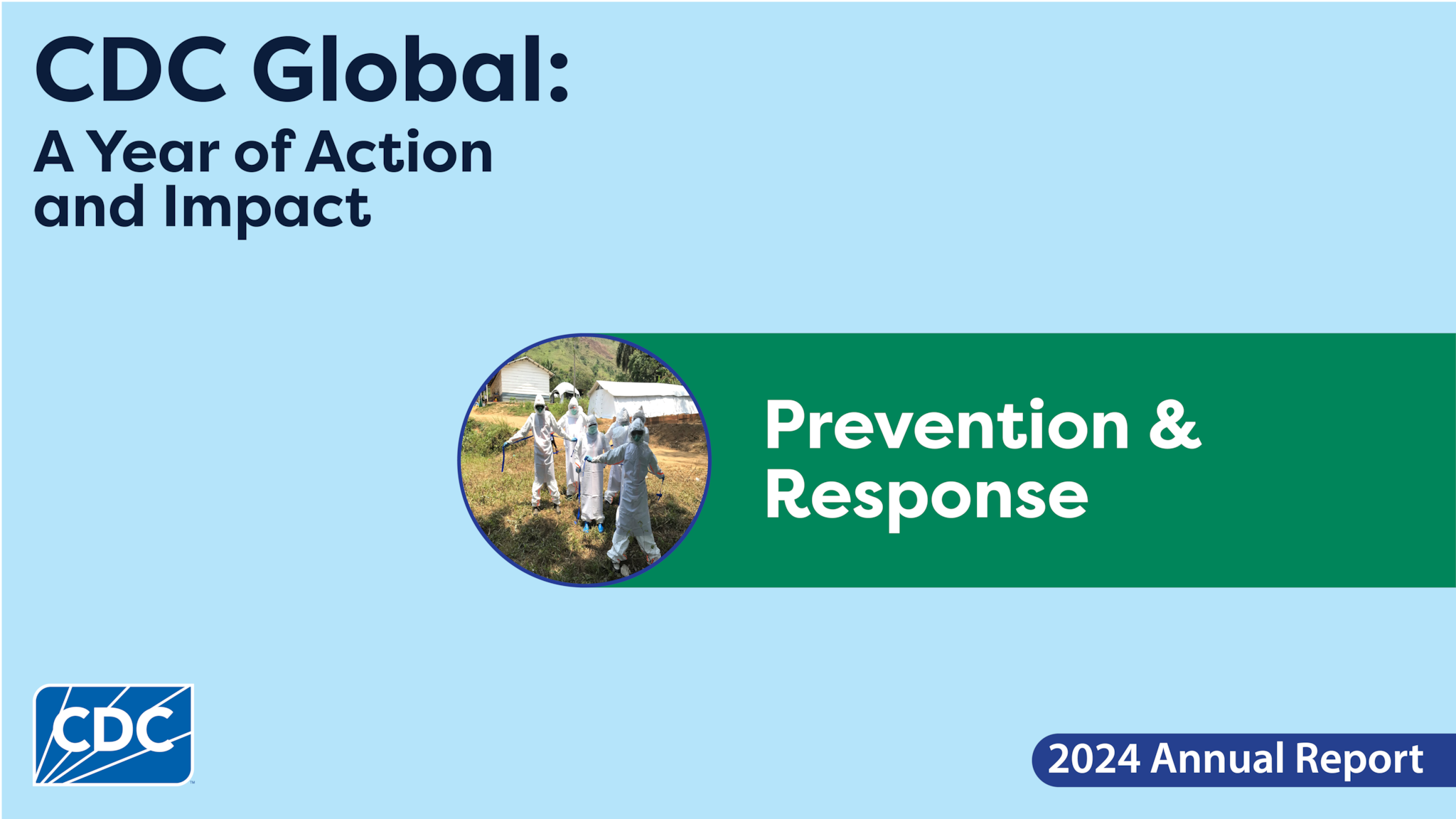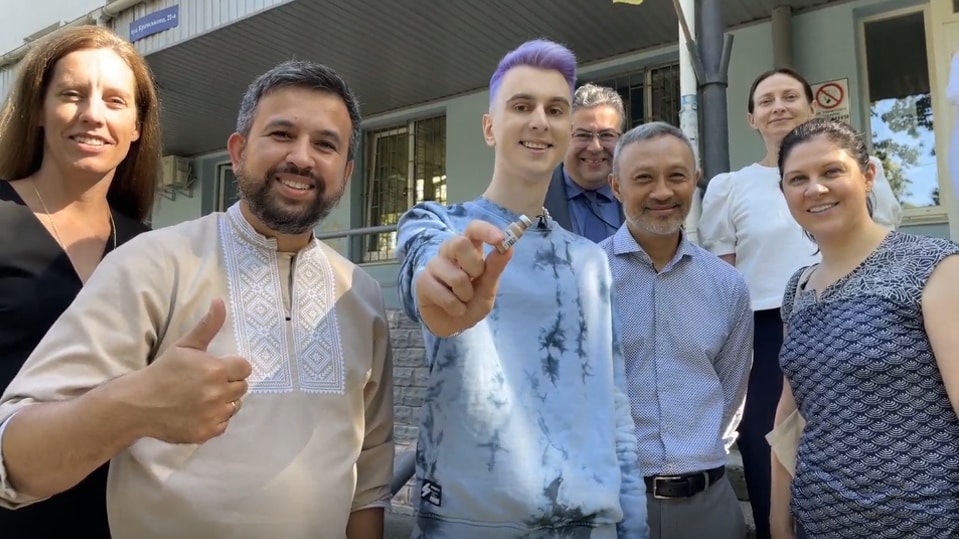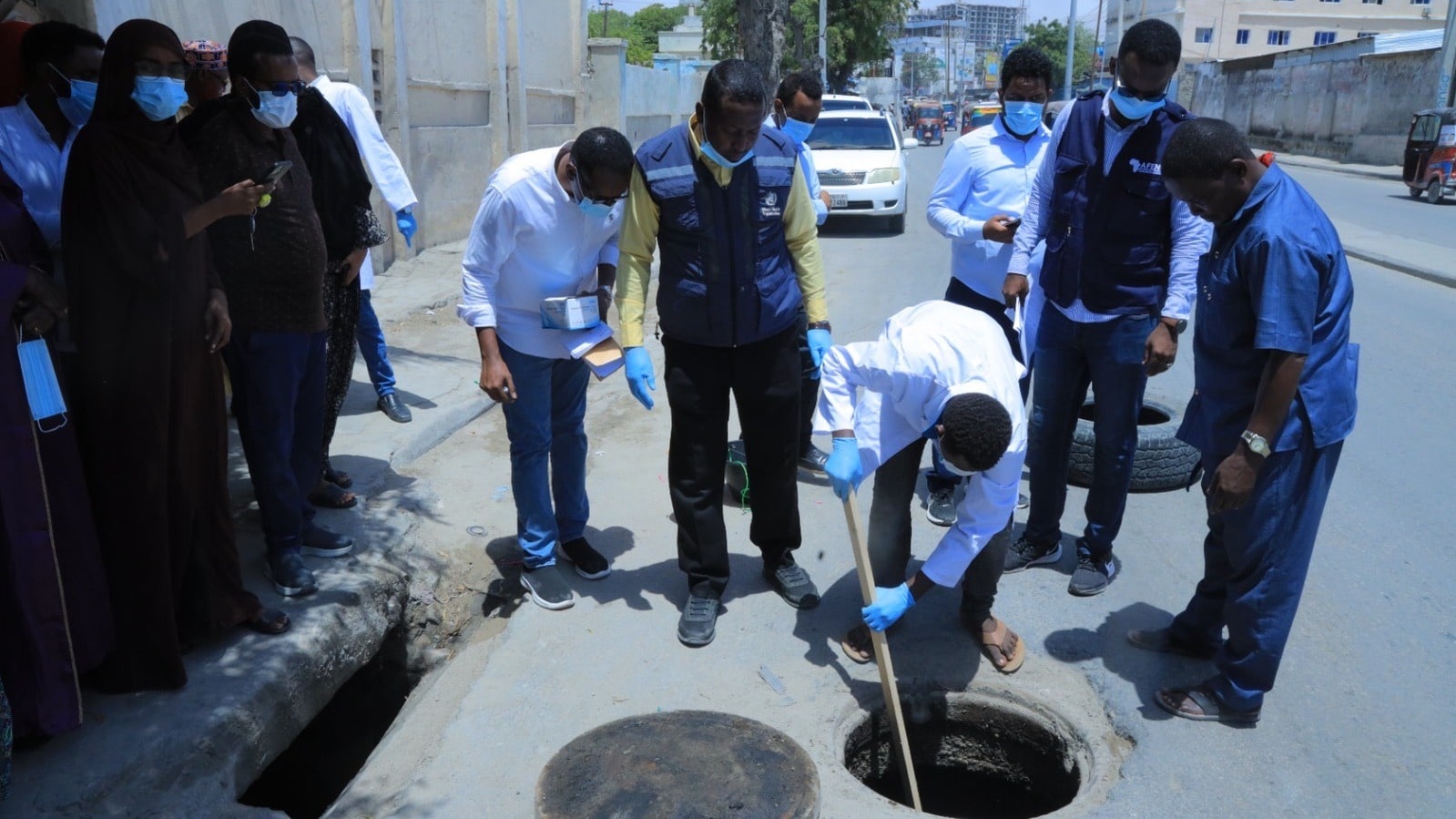At a glance
In 2024, CDC tackled frequent, complex, and long-lasting public health emergencies and took action to keep people healthy and safe.

Novel methods

CDC is focused on ending HIV as a public health threat by 2030. In 2024, CDC initiated the first PEPFAR implementation of injectable cabotegravir (CAB-LA) in Ukraine amidst wartime challenges, allowing for long-acting HIV prevention. Injectable long-acting CAB-LA taken every two months dramatically lowers the chances of acquiring HIV, expands HIV prevention options, and mitigates the need for frequent dosing and the need to carry or take pills.
CDC has also begun preparations for the global distribution of the twice-yearly injectable Lenacapavir for HIV prevention, working in 2024 to identify and prioritize implementation where it has the potential to have a significant impact on our collective goal of ending HIV as a public health threat in the U.S. and worldwide.
Effective targets
CDC aims to increase the speed of outbreak detection and response for diseases that threaten global health security. The 7-1-7 approach includes a bottleneck analysis, which helps countries identify barriers to detecting outbreaks within 7 days, reporting within 1 day, and mounting a response within 7 days.
With CDC partnership, Sierra Leone used the 7-1-7 approach to analyze 16 outbreak responses and found that, while they met the targets for identification and reporting, the average response time was 63 days – mainly due to laboratory and supply chain delays. The country is using this result to direct resources where they are needed most, including improving the availability of laboratory supplies, particularly critical reagents, to decrease the time it takes to confirm testing results.
As of 2024, CDC is working to expand use of 7-1-7 in 26 countries worldwide.
Data-driven recommendations
In 2024, Zambia's largest and deadliest cholera outbreak in decades impacted more than 20,000 people. CDC advised the Ministry of Health and provided data-driven recommendations to prevent cholera at the community level, helping to end the outbreak in 7 months.
In the DRC, a pilot project led by CDC, WHO, and the DRC Ministry of Health demonstrated that cholera control can be achieved with multisectoral strategies like surveillance, case management, and safely managed water, sanitation and hygiene. This proved that small, but sustained investments can work to stop cholera in low-resource, endemic communities.
Centralized response
Nipah virus is a highly fatal pathogen with epidemic potential. Bangladesh has faced repeated outbreaks of Nipah, with a fatality rate as high as 71%. CDC has collaborated with local partners to build laboratory testing and surveillance capacity for Nipah virus, but the country's Public Health Emergency Operations Center (PHEOC) had not been involved in responses. CDC partnered with Bangladesh to review its PHEOC activation criteria and processes, and in February 2024 it activated for Nipah for the first time.
Story Spotlight: Strengthening public health capacity in Somalia

Somalia faces the longest uninterrupted variant polio outbreak globally, spanning nearly eight years. Food insecurity, climatic shocks, and conflict cause internal displacement and create inaccessible areas that drive the transmission of variant polio, requiring urgent humanitarian and polio response activities.
To address this, CDC collaborated with the Federal Ministry of Health and Human Services of Somalia, including the National Institute of Health and Expanded Program on Immunization, to develop and launch Frontline FETP cohorts that specifically focus on vaccine-preventable disease surveillance, routine immunization, and polio outbreak response. This new approach was launched under the guidance of the Somalia Ministry of Health with support from WHO Somalia, UNICEF Somalia, the Task Force for Global Health, and the African Field Epidemiology Training Network.
The unique value of FETP is that it brings in and trains people who live and work in the areas they are helping. Residents from diverse public health disciplines – including surveillance, routine immunization, and maternal and child health – were recruited to assist case and outbreak investigations, conduct health facility immunization assessments, and serve as independent monitors for vaccination campaigns.
The impact extends beyond the usual scope of FETP to support broader Global Polio Eradication Initiative objectives. In April 2024, FETP graduates assisted the Somalia polio program in field data collection for an external acute flaccid paralysis surveillance review in areas that were inaccessible to international staff. The combined efforts of CDC and partners promise to contribute significantly to polio eradication and the control of other vaccine-preventable diseases in the region, with Somalia FETP residents and graduates continuing to play a key role in these efforts moving forward.